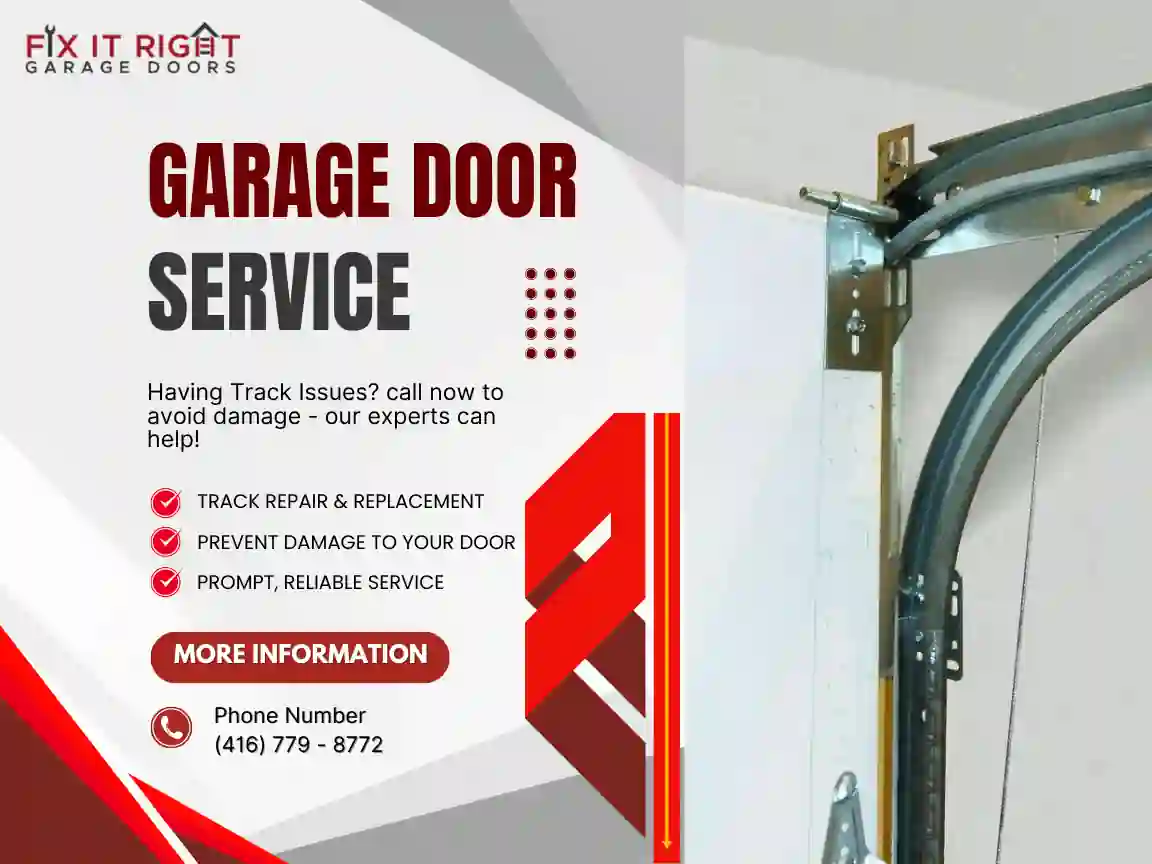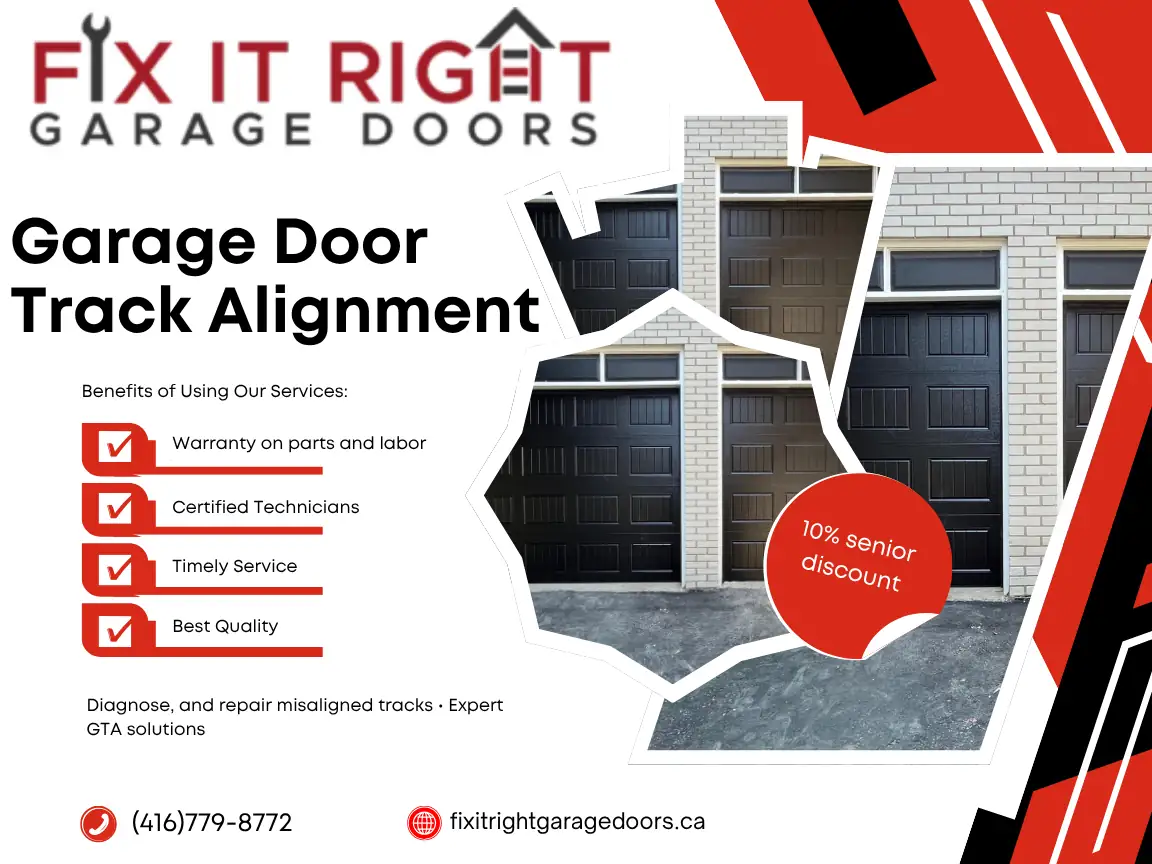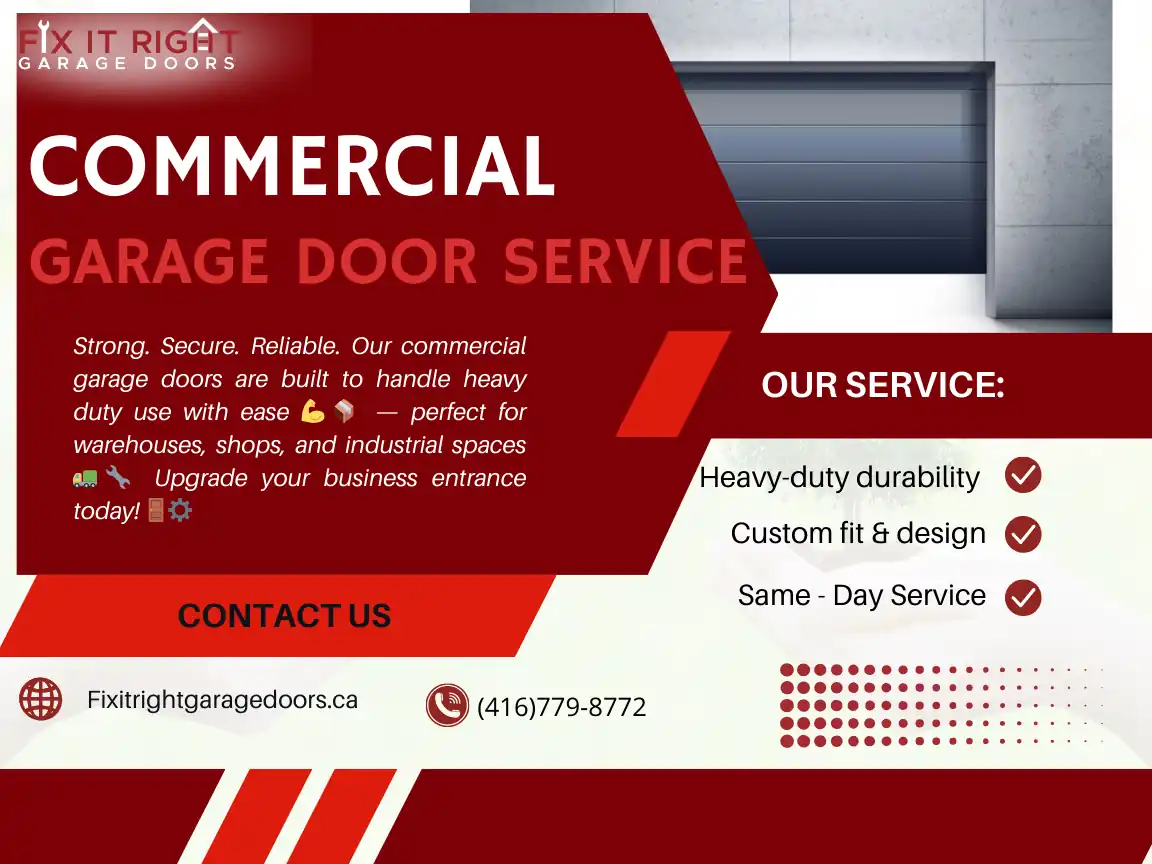Often overlooked, yet undeniably crucial to your garage door’s functionality, are the garage door tracks. These unassuming metal pathways are the backbone of your entire garage door system, guiding the rollers and ensuring the smooth, quiet, and safe movement of one of the largest moving parts of your home. Without properly aligned, clean, and well-maintained garage door tracks, your garage door would quickly become a frustrating, noisy, and even dangerous obstacle.
In this comprehensive guide, we’ll dive deep into the world of garage door tracks, exploring their various types, the common problems they face, essential maintenance tips, how to identify when you might need garage door track repair, and the critical importance of professional intervention for complex issues like a bent garage door track or a full garage door track replacement.
Understanding the Role of Garage Door Tracks
Imagine a train without its rails – that’s essentially a garage door without its tracks! The garage door tracks are precisely engineered metal channels that run vertically along the sides of the garage door opening and then curve horizontally along the ceiling. Rollers, attached to the garage door panels, fit snugly within these tracks, allowing the door to glide effortlessly as it opens and closes.
These tracks are manufactured from galvanized steel to resist rust and corrosion, an important feature given the often-damp environment of a garage. They come in various widths (typically 1, 2, or 3 inches) and thicknesses, with 2-inch tracks being the most common for residential applications. The thickness of the steel also varies, with heavier doors (like older wood doors) requiring thicker, more robust tracks for proper support.
Types of Garage Door Tracks: Beyond the Basics
While the standard vertical-to-horizontal track is what most homeowners envision, there are several specialized types of garage door tracks designed to accommodate different garage configurations and functional needs:
- Standard Lift Tracks: This is the most common residential setup. The vertical track rises a few inches short of the door’s height, then curves into a horizontal track that runs parallel to the ceiling. This design requires a certain amount of “headroom” (space above the garage door opening) for the curve and springs.
- Low Headroom Tracks (Dual Track System): Ideal for garages with limited headroom. This system uses a second horizontal track for the top section of the door, allowing it to move back quickly and reduce the vertical space needed for the door to open.
- High Lift Tracks: Used when there’s ample headroom (e.g., in garages with very high ceilings). These tracks allow the door to rise much higher vertically before transitioning to the horizontal position, providing more overhead clearance when the door is open. This is popular for garages storing RVs, boats, or cars with roof racks.
- Vertical Lift Tracks: Commonly found in commercial or industrial settings with extremely high ceilings. In this configuration, the door travels almost entirely straight up vertically before stopping, with little to no horizontal track. This requires significant overhead space.
- Roof Pitch Tracks: These custom tracks are designed to follow the slope of a sloped garage ceiling, maximizing vertical clearance while accommodating the roofline.
The type of garage door tracks installed in your home is determined by factors like your garage’s dimensions, the available headroom, and your specific clearance needs.


Why Track Health Matters: Common Problems and Their Impact
Given their fundamental role, issues with garage door tracks can quickly escalate into major problems for your entire garage door system. Here are some of the most common issues:
- Bent Garage Door Track: This is a frequent issue, often caused by accidental impact (e.g., a car bumping the track), loose fasteners allowing the track to warp, or even extreme force applied to the door. A bent track will cause rollers to bind, creating friction, noise, and potentially forcing the door off its path.
- Misaligned Garage Door Track: Even a slight misalignment can prevent the rollers from moving smoothly, leading to jerky operation, grinding noises, and uneven door movement. This can happen due to loose mounting brackets, house settling, or impacts.
- Loose Fasteners: The brackets holding the tracks to the garage walls can become loose over time due to vibration from door operation. Loose fasteners allow the tracks to shift, leading to misalignment.
- Accumulation of Dirt and Debris: Dust, grime, cobwebs, and even small stones or leaves can build up inside the tracks, creating friction and impeding the smooth movement of the rollers.
- Worn Rollers: While not strictly a track issue, worn or damaged rollers can damage the tracks by scraping or binding, often leading to a garage door off track scenario.
- Corrosion/Rust: Although tracks are galvanized, prolonged exposure to moisture, road salt (especially in Vaughan, Ontario!), or chemicals can lead to rust, which creates rough spots and friction.
The Consequences of Unaddressed Track Problems:
Ignoring issues with your garage door tracks can lead to:
- Garage Door Off Track: This is perhaps the most dramatic and dangerous consequence. When the rollers come out of the tracks, the heavy garage door can hang precariously, become jammed, or even fall, causing significant damage or severe injury.
- Increased Wear and Tear: Misaligned or dirty tracks force your garage door opener to work harder, accelerating wear on the opener motor, springs, cables, and rollers.
- Loud Noises: Squeaking, grinding, scraping, and screeching noises are often tell-tale signs of track problems.
- Reduced Lifespan of the System: Neglecting track maintenance shortens the overall lifespan of your entire garage door system.
- Safety Hazards: A compromised track system is a major safety risk.
Proactive Maintenance for Your Garage Door Tracks
Regular maintenance of your garage door tracks can prevent most common issues and extend the life of your garage door system. Here’s what you can do:
- Visual Inspection (Monthly):
- Check for Alignment: Stand inside your garage with the door closed. Look along the vertical and horizontal sections of both tracks. They should appear perfectly parallel and plumb (vertically) or level (horizontally). Any visible bends or gaps between the rollers and tracks are red flags.
- Inspect for Damage: Look for any dents, kinks, or signs of wear on the track surfaces.
- Check Fasteners: Look at all the bolts and screws that secure the track brackets to the walls. Are any loose or missing?
- Look for Debris: Check for any dirt, dust, cobwebs, or small objects inside the tracks.
- Cleaning the Tracks (Every 3-6 Months):
- Use a damp cloth to wipe down the inside surfaces of both vertical and horizontal tracks. Remove any accumulated dirt, grease, or debris.
- You can use a mild all-purpose cleaner if needed, but ensure you wipe it thoroughly dry afterwards.
- Important: Unlike other garage door components, do not lubricate the inside of the garage door tracks. Lubricant on the tracks can attract dirt and grime, turning it into a sticky abrasive paste that impedes roller movement rather than helping it. The rollers themselves might need lubrication (especially their bearings/stems, not the wheels themselves if they are nylon), but the tracks should be clean and dry.
- Tightening Fasteners (Annually):
- Using a socket wrench or screwdriver, carefully tighten all the bolts and screws that secure the track brackets. Be firm but avoid overtightening, which could strip the screws or warp the track.
When to Consider Professional Garage Door Track Repair or Replacement
While routine maintenance can prevent many problems, some issues with garage door tracks are best left to professionals. Attempting complex repairs without the proper tools, experience, and safety knowledge can lead to further damage, personal injury, or even a complete door collapse.
Here’s when it’s time to call in the experts for garage door track repair or replacement:
- Bent Garage Door Track (Significant): Minor bends that can be gently tapped back into place (with a rubber mallet and a block of wood as a buffer) might be DIY-friendly. However, if the track is severely bent, kinked, or has multiple distortions, it needs professional attention. Attempting to force a severely bent track can damage the rollers, hinges, or the door panels themselves.
- Garage Door Off Track: This is a highly dangerous situation. The door is under immense tension from the springs, and trying to put it back on track yourself can lead to serious injury or further damage to the door system. Professionals have the specialized tools and knowledge to safely re-rail the door and address the underlying cause.
- Worn or Damaged Rollers: While replacing rollers can be a DIY task for some, if the rollers are severely worn or have caused damage to the track, a professional assessment is crucial.
- Structural Damage to Mounting Points: If the wood framing or concrete where the tracks are mounted is damaged or rotting, the tracks won’t be securely supported. This requires structural repair before the tracks can be properly reinstalled.
- Constant Misalignment: If your tracks frequently go out of alignment despite your best efforts to tighten fasteners, it indicates a deeper underlying issue that a professional can diagnose.
- Severe Rust or Corrosion: While surface rust can be treated, if the tracks are extensively corroded or have holes, they need to be replaced. A rusted track can snag rollers and weaken the entire system.
- Garage Door Track Replacement: If a track is beyond repair (e.g., severely bent, broken, or extensively corroded), a full garage door track replacement is necessary. This involves specialized tools and expertise to ensure the new tracks are perfectly aligned and safely integrated into the system.
Cost Considerations for Garage Door Track Repair in GTA, Ontario:
The cost of garage door track repair or replacement in Vaughan, Ontario, can vary based on the severity of the damage, the type of track, and whether other components (like rollers or cables) also need attention.
Here’s a general idea of typical costs (always get a detailed quote):
| Service | Estimated Cost Range (CAD) in GTA, ON* | Notes |
|---|---|---|
| Track Adjustment/Minor Realignment | $125 – $275 | For simple realignments or tightening loose fasteners. |
| Bent Garage Door Track Repair | $175 – $400+ | Depends on severity; may involve straightening or partial replacement. |
| Garage Door Off Track (Re-railing) | $200 – $500+ | Often includes fixing underlying cause (e.g., loose cables, minor track adjustment). |
| Full Garage Door Track Replacement | $250 – $600+ per side | For extensively damaged or rusted tracks. Can vary by track width and material. |
Export to Sheets
*These are approximate ranges and can vary based on technician, specific parts, and complexity of the job. Always get a detailed quote.
The Importance of Professional Expertise
Working with garage door tracks and the entire garage door system involves significant risks. The springs are under extreme tension, and if mishandled, they can cause severe injury. Professionals have the training, specialized tools, and safety protocols to handle these components safely and effectively. They can also quickly diagnose the root cause of the problem, ensuring a long-lasting solution rather than just a temporary fix.
For further information on maintaining your garage door or to book a service appointment for garage door track repair or garage door track replacement, please give us a call! We’re here to help ensure your garage door operates safely, smoothly, and efficiently for years to come. 📞
For more information on garage door safety standards and maintenance, you can consult resources from the International Door Association (IDA): https://www.doors.org/ or review homeowner guides from major manufacturers.
Conclusion: Smooth Running, Safe Home
Your garage door tracks are the unsung heroes of your garage. They work tirelessly to ensure your door operates flawlessly, providing convenience, security, and curb appeal. By understanding their function, performing regular maintenance, and knowing when to call in the professionals for a bent garage door track or a full garage door track replacement, you can prevent minor issues from becoming major headaches. Prioritizing the health of your garage door tracks means prioritizing the safety and longevity of your entire garage door system, ensuring smooth running and a safe home for everyone. 🏡✅










